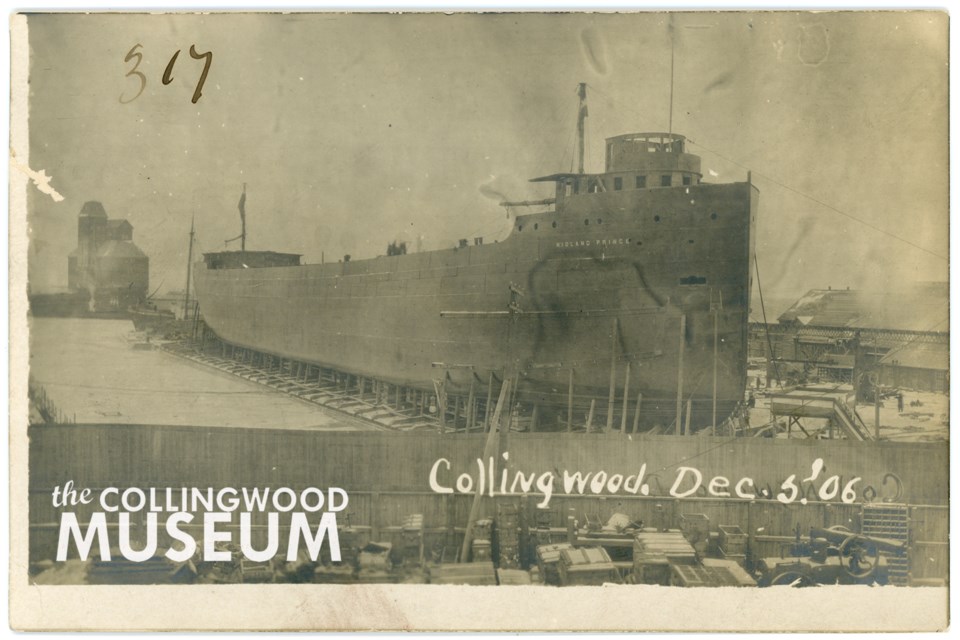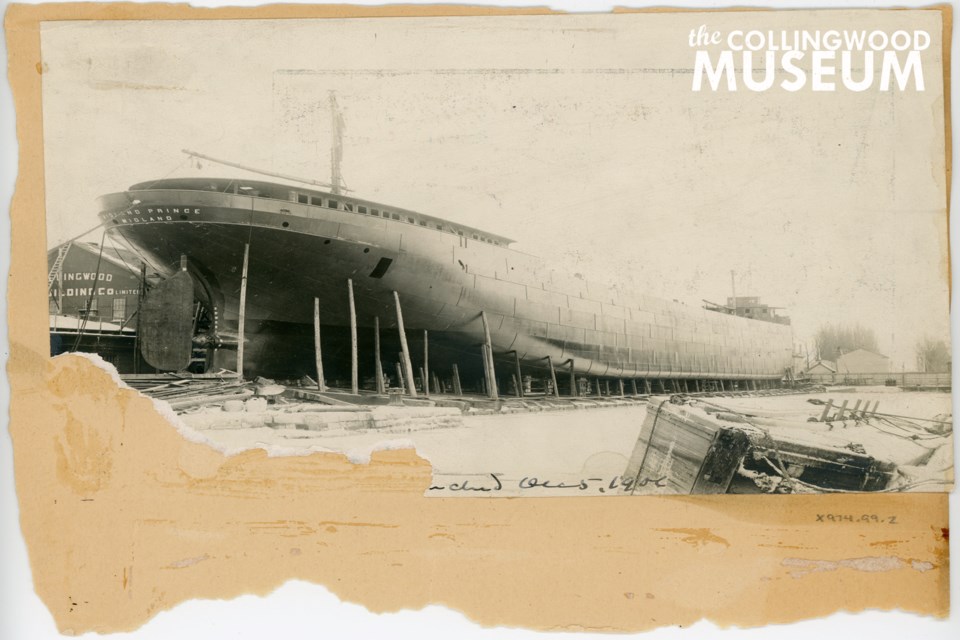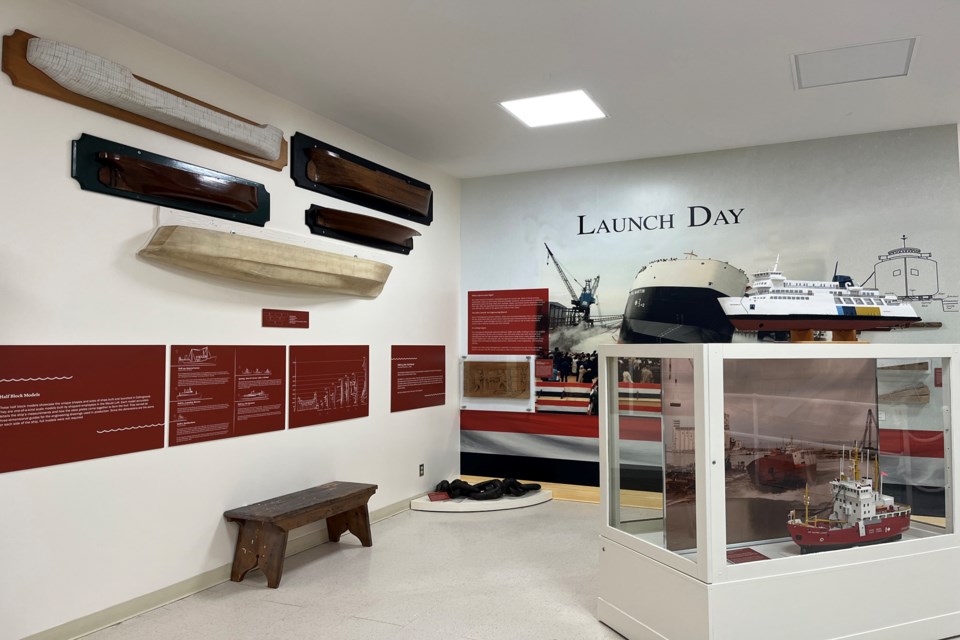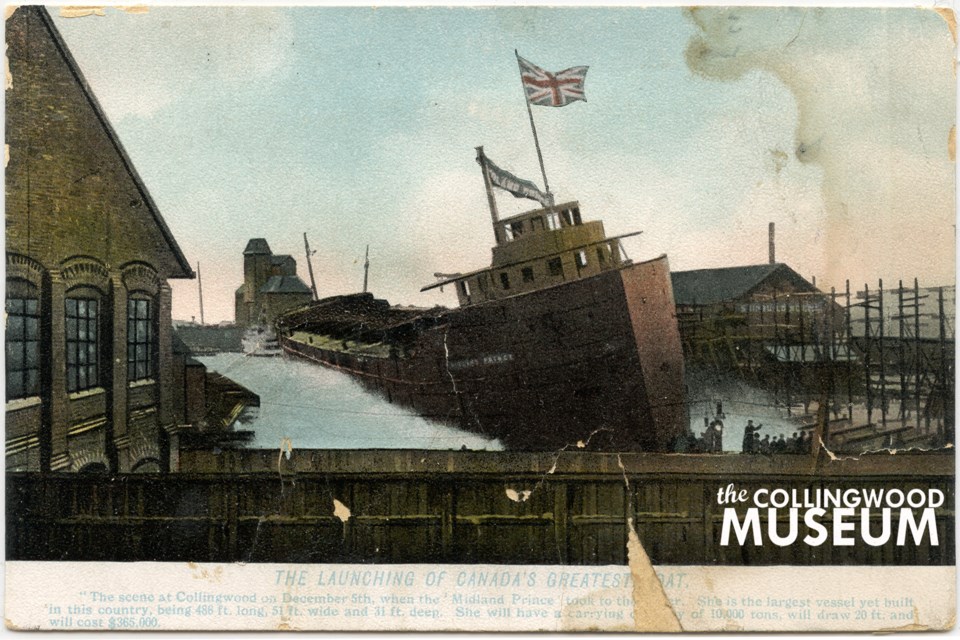This ongoing series showcases historic photos in the Collingwood Museum collection, with research and writing by Melissa Shaw, the museum supervisor.
The launch of the Collingwood-built Midland Prince in 1906 may seem like just another day in Collingwood’s long history of shipbuilding. In the context of Canadian shipbuilding, however, the Midland Prince marked one of many national accomplishments to come out of Collingwood.
Constructed as Hull 9, the Midland Prince was launched on December 5, 1906. As the giant ship slid into the flooded basin of Dry Dock No. 1, a new Canadian record was set. The Midland Prince became the longest ship built in Canada at a cost of $375,000. Today, this amounts to more than $10 million according to the Bank of Canada’s inflation calculator.

The ship was commissioned by James Playfair for the Midland Navigation Company. The large freighter hauled grain from Thunder Bay, Duluth and Chicago to Georgian Bay and Lake Erie ports. In 1913, the Midland Prince joined the fleet of Canadian Steamship Lines (CSL) and remained in service until 1966.
In 1929, Midland Prince was converted to a self-unloader at the Midland Shipbuilding Co. Ltd, becoming the first Canadian vessel of its size to this purpose. As the term “self-unloader” indicates, the vessel was able to unload its cargo using its own equipment which made for a more efficient operation.
Under CSL, the Midland Prince became a frequent site on the Welland Canal, hauling coal to Toronto and Hamilton. Like many vessels, it had its fair share of scares and scrapes. Most notably, the ship survived storms, a collision on Lake Superior in 1916, a grounding in 1924, and a fire in later years.
At the conclusion of the 1968 shipping season, the Midland Prince was sold to Marine Salvage in Port Colborne. The vessel was ultimately scrapped in Puerto del Santa Maria, Spain, with demolition beginning on July 31, 1969.
The Collingwood Museum cares for photographs of the Midland Prince that document its construction and launch along Collingwood’s waterfront. Many of the photographs were collected and documented by the Huron Institute, the Collingwood Museum’s predecessor, while others were donated more recently by local collectors and the Collingwood Shipyards.

As noted, Collingwood’s shipbuilding activities produced many national firsts. In addition to the Midland Prince, other national achievements included the construction of the James Carruthers, the largest registered freighter in Canada (1913); the first commissioned corvette in Canada during the Second World War, H.M.C.S. Collingwood (1940); and the completion of the largest Canadian oil tanker, the Imperial Sarnia (1948).
If you have any other Collingwood firsts to share, please contact Collingwood Museum staff.

Today, you can see the nameplate and bell for H.M.C.S Collingwood on display at the Collingwood Museum. The half-block model of the Imperial Sarnia is featured in the Launch Day exhibition.
To explore additional photographs from the Collingwood Museum’s collection, visit the online collections database at https://collingwood.pastperfectonline.com/. See what records you can find using keywords or advanced searches. A keyword search for “harbour” returns 28 historic photographs. The online database was launched in December 2023 and staff will be adding content throughout 2024.



